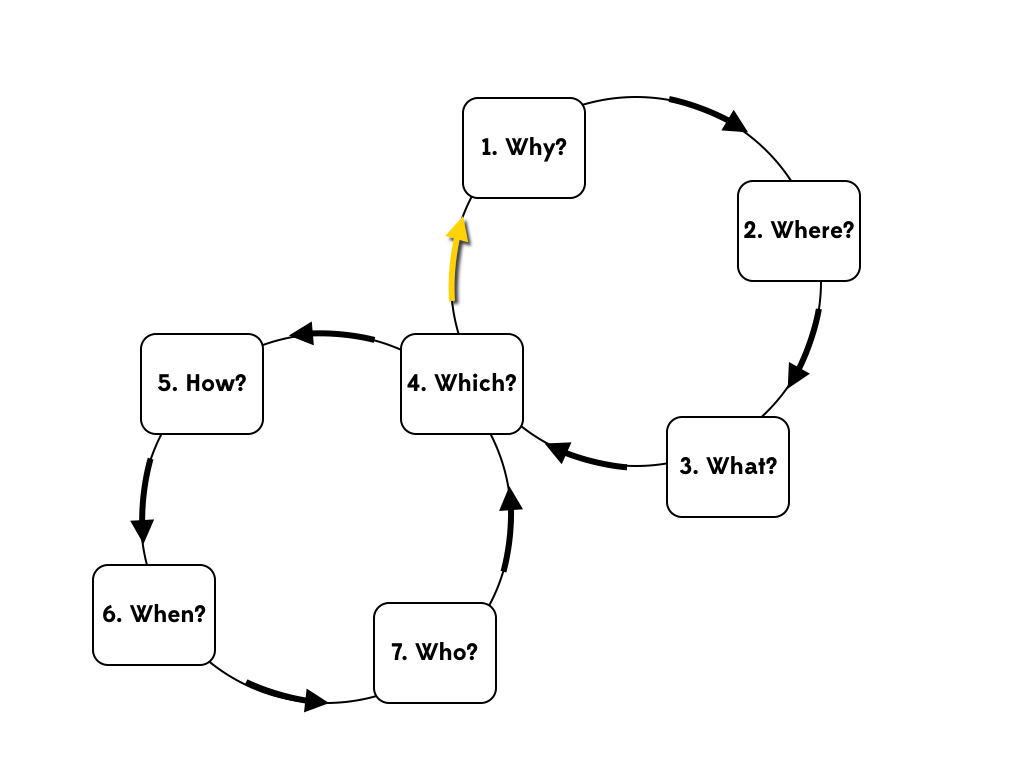Whether you are starting a new business, or looking for ways of developing an existing business, you will need to create and evaluate ideas for products and services that you might want to sell. For some people the challenge is coming up with the ideas, for others (and this is often the case with entrepreneurs) the problem can be knowing how to capture, sift and prioritise the many ideas. This post will outline a simple process to help you identify and work through your ideas from the moment of inspiration to the point of launching the business. Whether they are for a home based business, a small business or a new business case within a larger existing company the process is very similar and you can follow the same steps.
When is the best time to consider new ideas?
A business person should always be on the look out for inspiration and new business ideas but all ideas have to have some sort of context. They have to be checked against the big concepts, such as your values and direction, and good ideas will have to be tested by some sort of planning process.
The concept of looking at options comes up in the ‘which’ of The Right Questions approach. It is a pivotal question because once you have your situational analysis, having collected facts and considered big questions, then looking at options creates the transition to more detailed planning, as demonstrated in the diagram below.

Step 1: Generate new business ideas
We all come up with good ideas but we don’t all remember or action them. Therefore I recommend that you keep some sort of list. This can be a list on your phone, a document on your computer, lots of post-it notes on a wall or a note in a pad – whatever works for you. What matters is that you keep ideas so they can be assessed at some later date. Beware; when you start thinking of ideas and recording them you will find that the flow of ideas is likely to increase!
As well as any ideas you already have you may want to generate a bunch of new ideas. Set aside some time – it can be as little as five minutes – when you are not going to be distracted and then use the time to brainstorm as many ideas as you can. You will probably find it easier to create ideas if you think about a specific area of business or sector. For example brainstorming ideas specifically for a courier service or thinking about products thing you could create with a 3D printer is easier than just trying to come up with random unrelated business ideas. Make sure you capture your ideas as you go.
You may want to approach the brainstorming session with some other people in a workshop; this could be an existing team of colleagues or just a group of friends. Sometimes having people not related to the industry is helpful as they can think beyond the normal confines of the sector.
Lateral thinking techniques may also be useful in generating a larger and more varied list of ideas that you can capture. Using random words or pictures can help inspire new approaches to business ideas. You can find out more about creating new ideas here: options and lateral thinking.
Step 2: Sift and prioritise the business Ideas
For each idea you brainstorm a list of pros and cons (this should only take a minute or two for each option). This will help you take a more quantative approach to assessing your ideas and help you to prioritise them.
Step 3: Identify your top three business ideas
Decide on your top three ideas based upon these pros and cons. Don’t discard the others but put them aside for the time being.
Step 4: Write a short business case for each option
Create one-page business cases for each of the top three ideas. Try and address the following categories and questions:
- Where? (Situation and Vision): What present situation and the problem that needs to be solved? What is the opportunity?
- What? (Mission): What is the solution? What are the key elements? What would success look like?
- Why? (Values and Priorities): What is the value proposition? Why is this idea unique? What is the USP? What are the benefits (financial and non-financial)?
- Who? (Competition and Market): Who is the competition and what will differentiate you from your competitors? Who are the target customers? How big is the market?
- How? (Planning, Strategy and Resources): What are the channels to market? What is the outline plan? What are the constraints you know about and the assumptions you have made? What are the next steps to launch the plan? What is the financial potential? What is the revenue model? What resources are necessary? What are the non-financial costs?
- When? (Time): What are the outline timings and milestones? When would be the optimum time to launch?
- Which? (Risk and Options): What are the risks? Is the idea feasible? If not what needs to change to make it possible? How do we test this concept? How will you validate the idea and improve on the concept in the short term?
Step 5: Test these business cases
Now take your three one-page business cases to someone you trust and try to sell your idea to them. Choose someone who will give you constructive criticism and use the resulting discussion to test and refine your options.
Step 6: Market test your idea
Before you do for a full launch of your new product or service do a small validation exercise to market test your business case. You should have identified some ideas for this in your one pager so you can put them into practise before writing a detailed business plan. This test might be as simple as stopping ten people in the street and asking them to buy something, or it could be putting up an advert on Google around relevant key words, or trialling a service for a limited period. Whatever approaches you choose, be certain that you test your assumptions about the size and appetite of the market. If people do not want to buy what you are offering then it is probably time to look at another option.
Step 7: Develop a business plan and then go for it
Take the best of the ideas and develop the business case into a more detailed plan. This does not need to be a huge document but it needs to have enough detail for you to turn your business case into action. If you want some hints on how to get going you can read this post on project planning.
You will now have created a business case, tested the market and created a plan. You are ready to launch!


